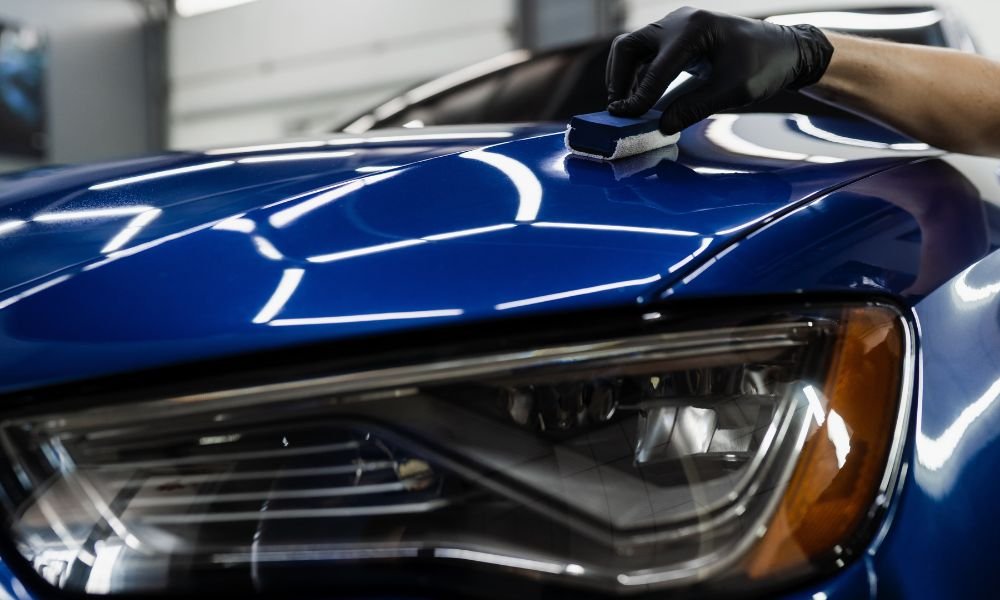Get trusted paint protection film installation to prevent rock chips and scratches.
A Comprehensive Guide to the Kinds of Ceramic Covering on the Market
Ceramic layers have arised as an essential service across various industries due to their distinct residential properties and applications. As we check out the unique characteristics and applications of these finishings, the ramifications for performance and longevity come to be significantly apparent, increasing inquiries regarding which type might finest suit your needs.
Recognizing Ceramic Coatings
Ceramic finishings are innovative safety remedies that have acquired appeal in different sectors, specifically in automobile and aerospace applications. These finishings include a fluid polymer that, when treated, develops a resilient, hydrophobic layer externally of the substrate. This layer supplies improved resistance to environmental impurities, UV radiation, and chemical direct exposure, thereby prolonging the life and aesthetic allure of the underlying product.
The essential element of ceramic finishings is silica, which adds to their hardness and durability. The application procedure normally includes surface preparation, application of the finishing, and treating, which can be attained through heat or UV light. When healed, ceramic finishes show phenomenal bonding residential properties, enabling them to stick strongly to a variety of surfaces, consisting of metals, plastics, and glass.
In enhancement to their safety features, ceramic finishings additionally use convenience of maintenance. Their hydrophobic nature lowers the adherence of dust and gunk, making cleaning easier and much less frequent. Overall, the adoption of ceramic finishings stands for a substantial development in surface area defense innovation, giving both functional and visual benefits throughout multiple sectors.
Kinds Of Ceramic Coatings
Various kinds of ceramic layers are readily available, each developed to meet specific efficiency needs and applications - Car Detailing. The most common kinds include:
Silica-based Coatings: These coatings mainly contain silicon dioxide and are known for their resilience and chemical resistance. They are widely made use of in automobile and industrial applications.
Titanium Dioxide Coatings: Prominent for their photocatalytic buildings, titanium dioxide layers are usually applied in environments where self-cleaning and antifungal properties are preferable, such as in structure products and automobile surfaces.
Zirconia Coatings: Defined by their high-temperature stability and thermal resistance, zirconia finishes are made use of in applications such as generator engines and high-performance automotive parts.
Alumina Coatings: Showing exceptional solidity and thermal security, alumina layers are regularly utilized in wear-resistant applications, including cutting tools and commercial machinery. - ceramic coating sarasota
Hybrid Coatings: Incorporating the homes of numerous products, crossbreed coverings use enhanced efficiency characteristics, making them suitable for special and requiring applications.
Each type of ceramic coating serves distinct objectives, permitting individuals to pick the most proper service based upon certain ecological conditions and performance requirements.
Advantages of Ceramic Coatings
Ceramic finishings, in certain, deal various advantages that make them increasingly popular amongst suppliers and customers alike. These coatings are resistant to scratches, chemicals, and UV rays, ensuring that the underlying surface area continues to be safeguarded over time.
In addition to longevity, ceramic coatings offer exceptional hydrophobic properties, permitting for very easy cleaning and maintenance. This water-repellent nature lessens the adherence of dirt, grime, and other contaminants, which can extend the visual allure and capability of the surface area. Ceramic coverings can considerably enhance thermal resistance, making them optimal for applications that endure high temperature levels.

Application Process
When applying ceramic finishings, a thorough technique is vital to achieve optimal results. A tidy surface makes sure proper adhesion of the layer.
When the surface is prepped, the following action is to use the ceramic covering. The coating should be used in thin layers, as thicker applications can lead to unequal surfaces.
After application, the coating requires a specific curing time, typically ranging from a couple of hours to a complete day, depending article on the item. Adhering to these steps vigilantly will take full advantage of the effectiveness and durability of the ceramic layer, supplying a durable safety layer for pop over here the surface.
Upkeep and Longevity
To make sure the longevity and efficiency of a ceramic coating, normal maintenance is necessary. Ceramic finishings, recognized for their longevity and protective high qualities, call for specific treatment routines to optimize their lifespan and performance. The very first step in maintenance involves regular washing with pH-neutral soap, staying clear of rough chemicals that can break down the layer. It is suggested to clean the lorry frequently, ideally every two weeks, to avoid the accumulation of pollutants that could compromise the finish's stability.
Along with routine cleaning, regular inspections are vital. Search for signs of wear or damage, such as hydrophobic properties diminishing or surface flaws. If needed, a light polish may be put on rejuvenate the coating without stripping it away.
Furthermore, the site application of a booster spray can improve the finish's hydrophobic results and restore its gloss. This is particularly helpful for coverings that have remained in use for an extensive period. Inevitably, by sticking to these maintenance techniques, one can significantly prolong the life of a ceramic finish, guaranteeing that it remains to provide optimum protection against ecological factors and maintain the aesthetic charm of the lorry.
Conclusion
